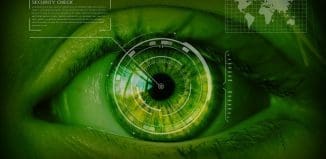Safe City meets Big Data on the corner of Video Analytics
This post is also available in:  עברית (Hebrew)
עברית (Hebrew)


With the advent of technological development and the significant reduction in the cost of video end user devices, one would be hard pressed to find nowadays, any city in the West which is not hard wired with video cams. This explosion has led to a staggering increase in the volumes of data these cameras relay to command and control centers. The new challenge organizations and counties now face is how to gather this data, and then analyze it as part of turning it into actionable information during routine periods as well as instances of urgent crises using non-manual means.
In a special interview to i-HLS, ahead of the iHLS Video Analytics Conference this March, Ophir Rahamim Head, Video Analytics at IBM, explains that “our solution is based on IVA Intelligence systems.”
He further explains that “these systems replace the human element and are capable of performing highly advanced analyses based on a logic that can anticipate events, analyze them, index them and enable real-time alert and post-event debriefing.”
Rahamim specifies that “our cameras, which come complete with sensors, identify each frame in any video stream and index it. If the sector they cover is a road or a junction, then they index all the data and parameters we set for them. They are capable of storing data pertaining to vehicles based on various categories such as license plate, color, driving speed and so on.” Thus, in case of unusual events, such as a car crash, the system’s database can be run based on various parameters to retrieve the relevant information.
Register to iHLS Israel Homeland Security
IBM’s systems are particularly useful in the HLS sector, as they can be used to identify suspicious patterns and unusual modes of behavior. “In the first stage, the system studies the terrain in order to distinguish between stationary and mobile objects. When something occurs contrary to the norm, like crowds gathering or acts of vandalism, the system can provide an alert. We have reached a stage in which the system can tell whether this is a group of people intent on perpetrating some criminal action or an act of sabotage, or these are just a few kids who are merely playing.” The cameras are supported by facial recognition systems and are also based on algorithms which are capable of alerting us to irregular and important features, used to distinguish between innocent passersby and people harboring malicious intent.
As for future challenges, Rahamim says that IBM’s labs in the US are working on smart algorithms which constitute a solution for sensors in motion. The system is already capable of RECOGNIZING objects against an ever changing background. He added that they already conducted a few tests with the new systems and that the algorithms are at a very advanced stage.





























